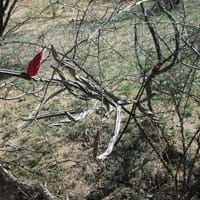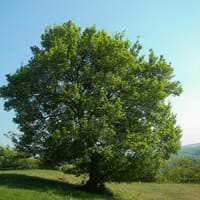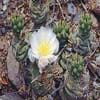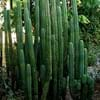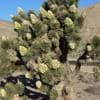Life Span
Perennial
Perennial
Type
Flowering Plants
Tree
Origin
Mexico, Caribbean, Central America
Europe, Northern Africa, Western Asia
Types
not available
A. campestre var. campestre - downy fruit
A. campestre var. leiocarpum (Opiz) Wallr. (syn. A. campestre subsp. leiocarpum) - hairless fruit
Number of Varieties
Not Available
Habitat
Desert
Forest margins, gardens, Suburban areas, Woods
USDA Hardiness Zone
12-15
5-8
Sunset Zone
H2
2a, 2b, 3a, 3b, 4, 5, 6, 7, 8, 9, 14, 15, 16, 17
Habit
Weeping
Oval or Rounded
Flower Color
White, Ivory
Green, Light Yellow
Flower Color Modifier
Not Available
Bicolor
Fruit Color
Non Fruiting Plant
Light Yellow, Light Pink, Light Green, Tan
Leaf Color in Spring
Green, Dark Green
Green, Light Green
Leaf Color in Summer
Green, Dark Green
Dark Green
Leaf Color in Fall
Green, Dark Green
Yellow, Gold, Tan
Leaf Color in Winter
Olive, Dark Green
Not Available
Leaf Shape
Long and slender with very sharp edges
Maple shaped
Plant Season
Summer
Spring, Summer, Fall
Sunlight
Partial shade
Full Sun, Partial Sun
Type of Soil
Sand
Clay, Loam, Sand
The pH of Soil
Neutral, Alkaline
Acidic, Neutral, Alkaline
Soil Drainage
Well drained
Average
Bloom Time
Early Summer, Summer
Early Spring
Tolerances
Drought
Pollution, Soil Compaction
Where to Plant?
Container, Ground
Ground
How to Plant?
Grafting, Seedlings, Transplanting
Grafting, Seedlings, Transplanting
Plant Maintenance
Medium
Medium
Watering Requirements
Does not require lot of watering, Water once every two or three weeks, Water when soil is dry
Needs watering once a week, Requires watering in the growing season
In Summer
Lots of watering
Lots of watering
In Spring
Moderate
Moderate
In Winter
Average Water
Average Water
Soil pH
Neutral, Alkaline
Acidic, Neutral, Alkaline
Soil Type
Sand
Clay, Loam, Sand
Soil Drainage Capacity
Well drained
Average
Sun Exposure
Partial shade
Full Sun, Partial Sun
Pruning
Remove damaged leaves, Remove dead branches, Remove dead leaves
Prune if you want to improve plant shape, Prune in winter, Prune to stimulate growth, Remove damaged leaves, Remove dead leaves, Remove deadheads
Fertilizers
All-Purpose Liquid Fertilizer
All-Purpose Liquid Fertilizer
Pests and Diseases
Aphids, Mealybugs, Root rot, Scale, Viruses
Fungal Diseases
Plant Tolerance
Drought
Drought
Flowers
Showy
Insignificant
Flower Petal Number
Semi-Double
Single
Foliage Texture
Bold
Medium
Foliage Sheen
Not Available
Glossy
Attracts
Not Available
Not Available
Allergy
Not Available
Asthma
Aesthetic Uses
Beautification
Showy Purposes
Beauty Benefits
Not Available
Not Available
Environmental Uses
Air purification
Air purification
Medicinal Uses
Diabetes, Hangover
Sore Eyes
Part of Plant Used
Flowers, Fruits, Leaves
Bark, Sap
Other Uses
Employed in herbal medicine, Fine spines and trichomes are used as fiber for weaving, Used As Food
Grown for shade, Used in Furniture, Used in making musical instruments
Used As Indoor Plant
No
No
Used As Outdoor Plant
Yes
Yes
Garden Design
Container, Hanging Basket, Houseplant, Tropical
Feature Plant, Hedges, Screening / Wind Break, Shade Trees
Botanical Name
Peniocereus greggii
ACER campestre
Common Name
Night Blooming Cereus, Reina de la noche, Arizona queen of the night
Field Maple, Hedge Maple
In Hindi
Night Blooming Cereus
फील्ड मेपल
In German
Nachtblühende Cereus
Feld-Ahorn
In French
Night Blooming Cereus
Maple terrain
In Spanish
Reina de la noche
arce de campo
In Greek
Night Blooming Cereus
Το πεδίο Maple
In Portuguese
Night Blooming Cereus
bordo de campo
In Polish
Noc Blooming Cereus
Klon polny
In Latin
Maria Maria Cereus
Field Maple
Phylum
Magnoliophyta
Magnoliophyta
Class
Magnoliopsida
Magnoliopsida
Order
Caryophyllales
Sapindales
Family
Cactaceae
Aceraceae
Clade
Angiosperms, Core eudicots, Eudicots
Angiosperms, Eudicots, Rosids
Tribe
Pachycereeae
Not Available
Subfamily
Cactoideae
Hippocastanoideae
Season and Care of Night Blooming Cereus and Field Maple
Season and care of Night Blooming Cereus and Field Maple is important to know. While considering everything about Night Blooming Cereus and Field Maple Care, growing season is an essential factor. Night Blooming Cereus season is Summer and Field Maple season is Summer. The type of soil for Night Blooming Cereus is Sand and for Field Maple is Clay, Loam, Sand while the PH of soil for Night Blooming Cereus is Neutral, Alkaline and for Field Maple is Acidic, Neutral, Alkaline.
Night Blooming Cereus and Field Maple Physical Information
Night Blooming Cereus and Field Maple physical information is very important for comparison. Night Blooming Cereus height is 180.00 cm and width 90.00 cm whereas Field Maple height is 910.00 cm and width 910.00 cm. The color specification of Night Blooming Cereus and Field Maple are as follows:
Night Blooming Cereus flower color: White and Ivory
Night Blooming Cereus leaf color: Green and Dark Green
Field Maple flower color: Green and Light Yellow
- Field Maple leaf color: Green and Light Green
Care of Night Blooming Cereus and Field Maple
Care of Night Blooming Cereus and Field Maple include pruning, fertilizers, watering etc. Night Blooming Cereus pruning is done Remove damaged leaves, Remove dead branches and Remove dead leaves and Field Maple pruning is done Prune if you want to improve plant shape, Prune in winter, Prune to stimulate growth, Remove damaged leaves, Remove dead leaves and Remove deadheads. In summer Night Blooming Cereus needs Lots of watering and in winter, it needs Average Water. Whereas, in summer Field Maple needs Lots of watering and in winter, it needs Average Water.
